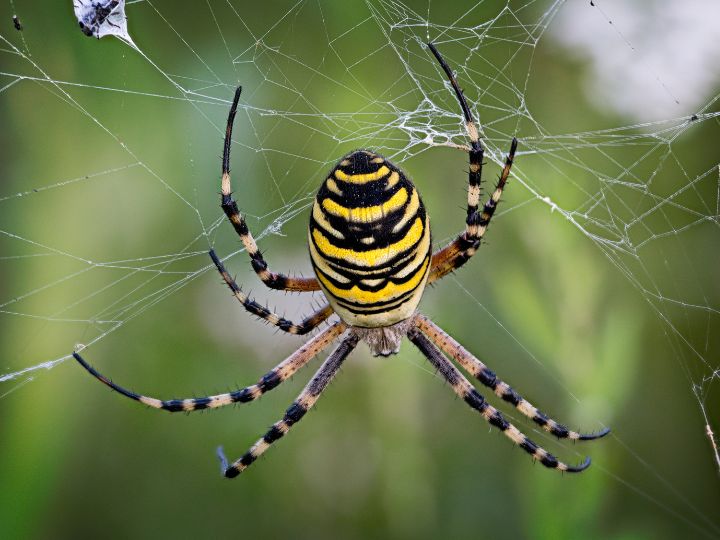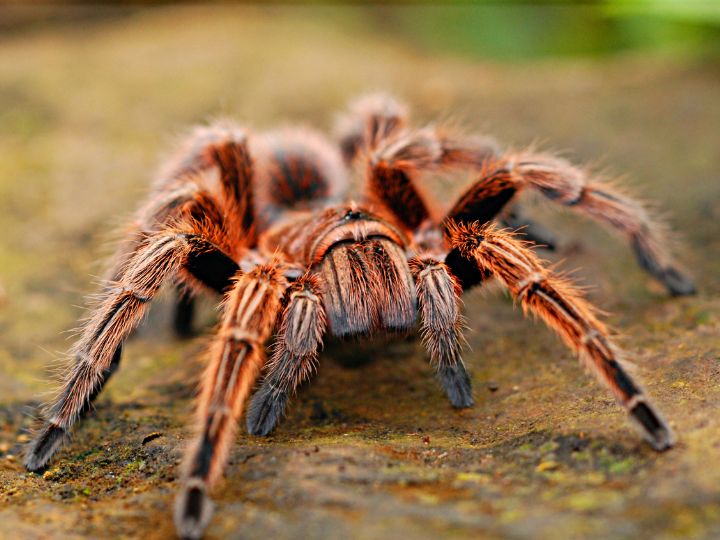Spiders are fascinating creatures that have long captivated the curiosity of people around the world. They possess unique abilities, such as spinning intricate webs and defying gravity by effortlessly scaling walls and clinging to ceilings. One question that commonly arises when observing spiders is whether they experience “fall damage” or any negative effects when they fall from heights.
To explore this topic, it’s essential to understand the biology and mechanics behind a spider’s movement and anatomy. Spiders, being arthropods, have an exoskeleton that provides them with structural support and protection from external harm. Additionally, their relatively low mass and terminal velocity play a crucial role in determining the impact of falls on their bodies. By examining these factors, along with the behavior of spiders in various situations, it becomes possible to determine the extent to which these creatures experience fall damage.
Physical Structure of Spiders
Exoskeleton and Its Role
Spiders possess a strong exoskeleton made of chitin, which serves as their external skeleton. This exoskeleton has multiple functions such as providing structural support, protection against predators, and helping in muscle attachment. Moreover, the exoskeleton is light, providing spiders with the ability to move efficiently without encumbering their bodies.
As spiders grow, they undergo a process called molting. During this process, they shed their old exoskeleton and replace it with a new one. The new exoskeleton is initially soft, giving the spider the chance to grow and expand before it hardens.

Image Credit: Canva
Size and Fall Damage
Spiders’ sizes can vary greatly, with some species being as small as 0.37mm while others can reach up to 90mm in size. Due to their lightweight exoskeleton and small size, most spiders experience minimal, if any, fall damage when they accidentally drop from surfaces.
| Size Range | Example Species |
|---|---|
| 0.37mm | Patu digua |
| 4mm – 8mm | Jumping spiders |
| 28mm – 30mm | Common orb-weaving spiders |
| 90mm | Goliath birdeater |
Moreover, spiders have specialized physical adaptations which further minimize fall damage. These include:
- Terminal velocity: Due to their low mass and air resistance, spiders have lower terminal velocities, reducing the impact force during a fall.
- Exoskeleton flexibility: The exoskeleton is not entirely rigid, allowing it to absorb some of the force of impact when a spider falls.
- Leg joints: Spiders’ “knees” possess joints that help dissipate the impact of a fall by bending, thus reducing stress on the body.
In summary, the physical structure of spiders, including their exoskeleton, size, and other adaptations, contribute to their resilience against fall damage.
Spider Abilities
Web Spinning and Utilisation
Spiders are well-known for their ability to spin webs for various purposes. These webs serve as a means of capturing prey, providing shelter, and facilitating communication between different spiders. They can also use their silk to create web parachutes and glide through the air, which is known as ballooning.
Spider silk is an extraordinary material that possesses both strength and flexibility. It is composed of proteins that give it a unique combination of properties, making it incredibly tough yet lightweight. Spiders also have the ability to produce different types of silk, each with a specific purpose ranging from structural support to capturing prey.
Gravity and Spider Movement
Spiders possess an incredible mastery over gravity, allowing them to move deftly across various surfaces. Their eight legs are equipped with claw tufts containing thousands of tiny hairs called setae. These setae generate van der Waals forces, which provide adhesion, enabling spiders to cling to surfaces with ease. This allows them to scale vertical walls and even walk upside down.
When it comes to falling, spiders have a remarkable ability to mitigate damage. Their lightweight bodies and exoskeletons enable them to distribute the impact of a fall across a larger surface area, reducing the overall force exerted on them. Additionally, their legs act as shock absorbers, further minimizing any potential harm.
In conclusion, spiders are highly adapted creatures, possessing unique abilities that allow them to survive in various environments. Their web-spinning skills and mastery over gravity make them formidable hunters and expert navigators.

Image Credit: Canva
Analyzing Fall Damage in Spiders
Velocity Factors
To understand fall damage in spiders, it is crucial to consider the factors affecting their velocity. Due to their size and low mass, spiders experience relatively low terminal velocity when falling. This low terminal velocity minimizes impact force, reducing the chances of injury. Various factors influence a spider’s fall velocity, such as air resistance, body mass, posture, and web-making abilities.
Some spiders can control their falling speed by using a technique called ballooning. They release strands of silk, which catch air currents and slow their descent. Ballooning allows spiders not only to minimize fall damage but also to travel long distances using air currents.
Real World Observations
In real-world scenarios, spiders exhibit remarkable resilience to fall damage. Observations reveal that many spiders can survive significant falls due to their exoskeletons, which provide structural support and protect their delicate internal organs. Spiders’ legs also play a crucial role in absorbing the impact force when they land. The joints in a spider’s legs can flex and distribute the force of the impact, reducing the risk of injury.
In laboratory experiments, researchers have dropped spiders from various heights and observed their ability to survive. These studies show that spiders can tolerate falls from significant heights without injury. However, it is worth noting that various spider species exhibit different levels of resilience to fall damage based on their size, weight, and other physical characteristics.
Comparisons with Other Creatures
Spiders vs Insects
Spiders, part of the arachnid class, share some similarities with insects, but they primarily differ in terms of their physiology and fall damage susceptibility. Insects typically have three body segments and six legs, whereas spiders have two body segments and eight legs. This distinction influences their respective abilities to withstand falls.
Insects like ants and bees can survive falls from great heights due to their small size and lightweight exoskeletons. The reduced impact force and air resistance help them land without injury. On the other hand, spiders possess hydraulic leg systems that allow them to cushion their fall. The orientation of their legs helps distribute the force of landing, minimizing the risk of damage.

Image Credit: Canva
Spiders vs Mammals
Comparing spiders to mammals reveals another insightful perspective on fall damage. Mammals, including humans, are more susceptible to fall injuries due to factors such as increased mass, rigid skeletal structures, and a lack of specialized adaptations for falls.
For instance, a mouse is more likely to survive a drop from a considerable height than a human, due to its lower body mass and higher surface area to volume ratio. Interestingly, a proportionate similarity occurs in spiders. Smaller spiders, such as the common house spider or jumping spiders, can withstand falls from greater heights than larger tarantulas, which can incur significant harm or even death from such falls.
In conclusion, while spiders show varying degrees of resistance to fall damage, they possess adaptations and physiological characteristics that allow them to better withstand falls compared to mammals.
Frequently Asked Questions
Becky is a fervent wildlife enthusiast and pet care expert with a diploma in canine nutrition. Her love for animals stretches beyond the domestic, embracing the wild tapestry of global fauna. With over a decade of experience in animal welfare, Becky lends her expertise to OutlandishOwl through insightful articles, captivating wildlife information, and invaluable guidance on pet nutrition. Her work embodies a deep commitment to understanding the intricate lives of animals and a passion for educating others on sustaining natural habitats. Becky's hands-on conservation efforts and her knack for translating complex dietary science into practical pet feeding tips make her an indispensable voice for creatures great and small.




